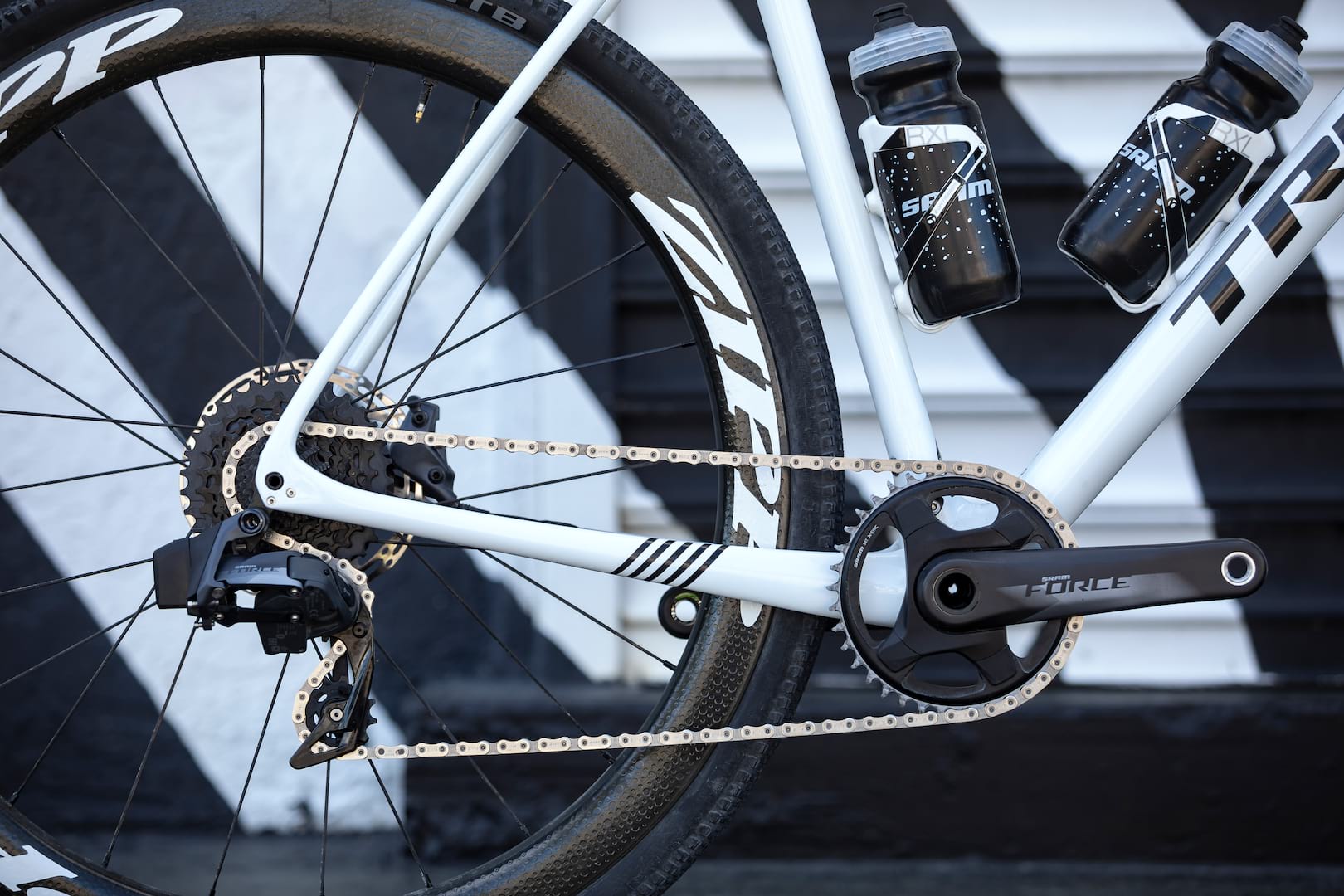Trickle down. What was only available at the very top of the range gradually filters down product lines. eTap was originally just the preserve of SRAM’s top end Red groupset. It doesn’t feel like that long ago that 11 speed was only available on top-of-the-range group sets. SRAM now offers 12 speed down to its NX level on the mountain bike side of things. Hot on the heals of the American company’s announcement that it was introducing eTap into its mountain bike range, it has now announced that it is bringing the benefits of wireless electronic shifting at Force-level. Now this is interesting, not just because of said trickle down, but also because Force is more typically specced on gravel bikes, and is available in a 1x configuration. Our interest has been piqued. Wireless electronic shifting, a 12speed cassette, what’s the deal?
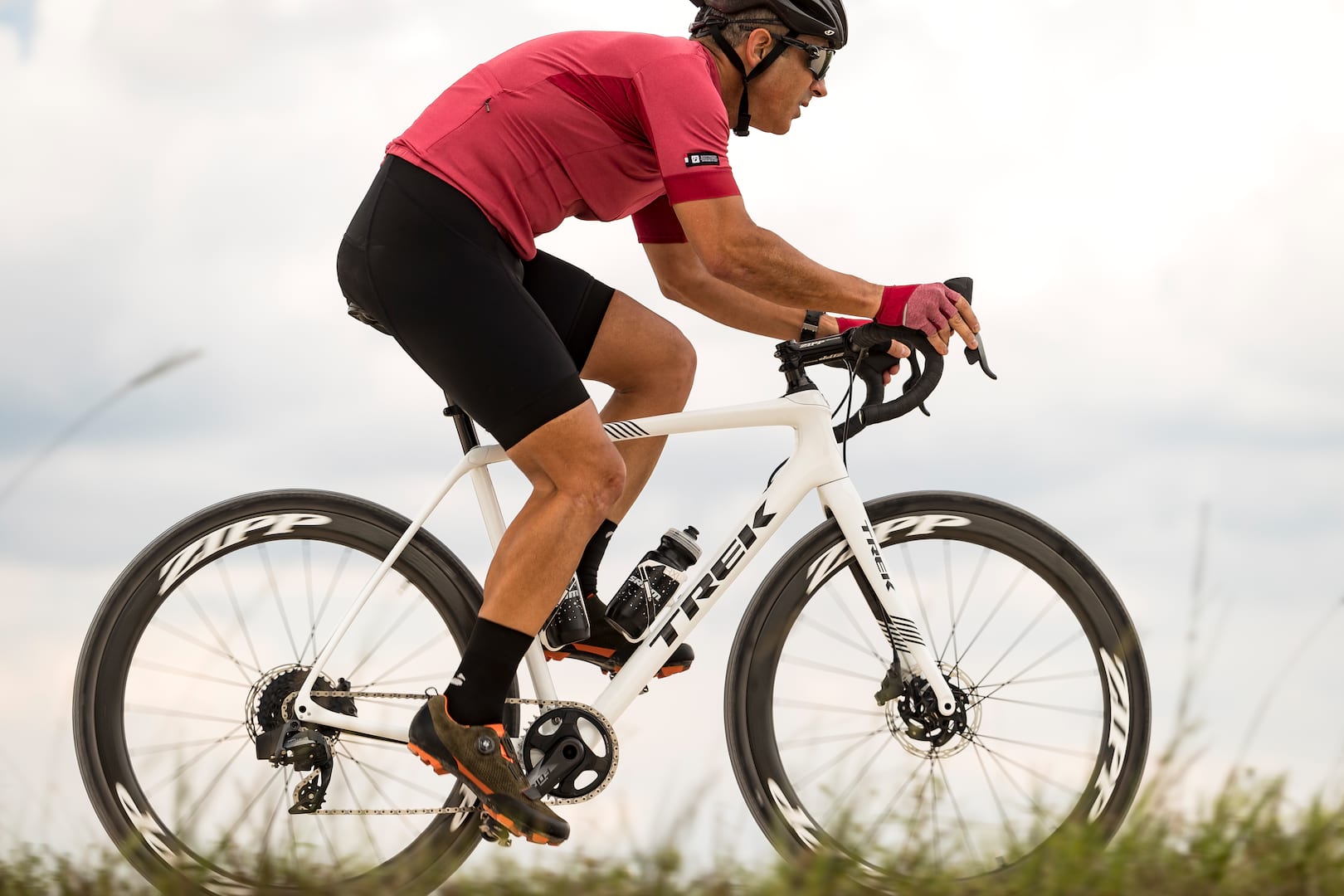
What SRAM says
“Today’s riders are more capable than ever. So we made a groupset that fits their needs. We focused on where road is going, not simply where it’s been. You asked. We listened. eTap® is now available for Force®. SRAM Force eTap AXS™ offers the key features of RED eTap AXS™—modern gearing, advanced chain management, and easy personalization—in a more affordable package. Exploring new limits has never been easier.”
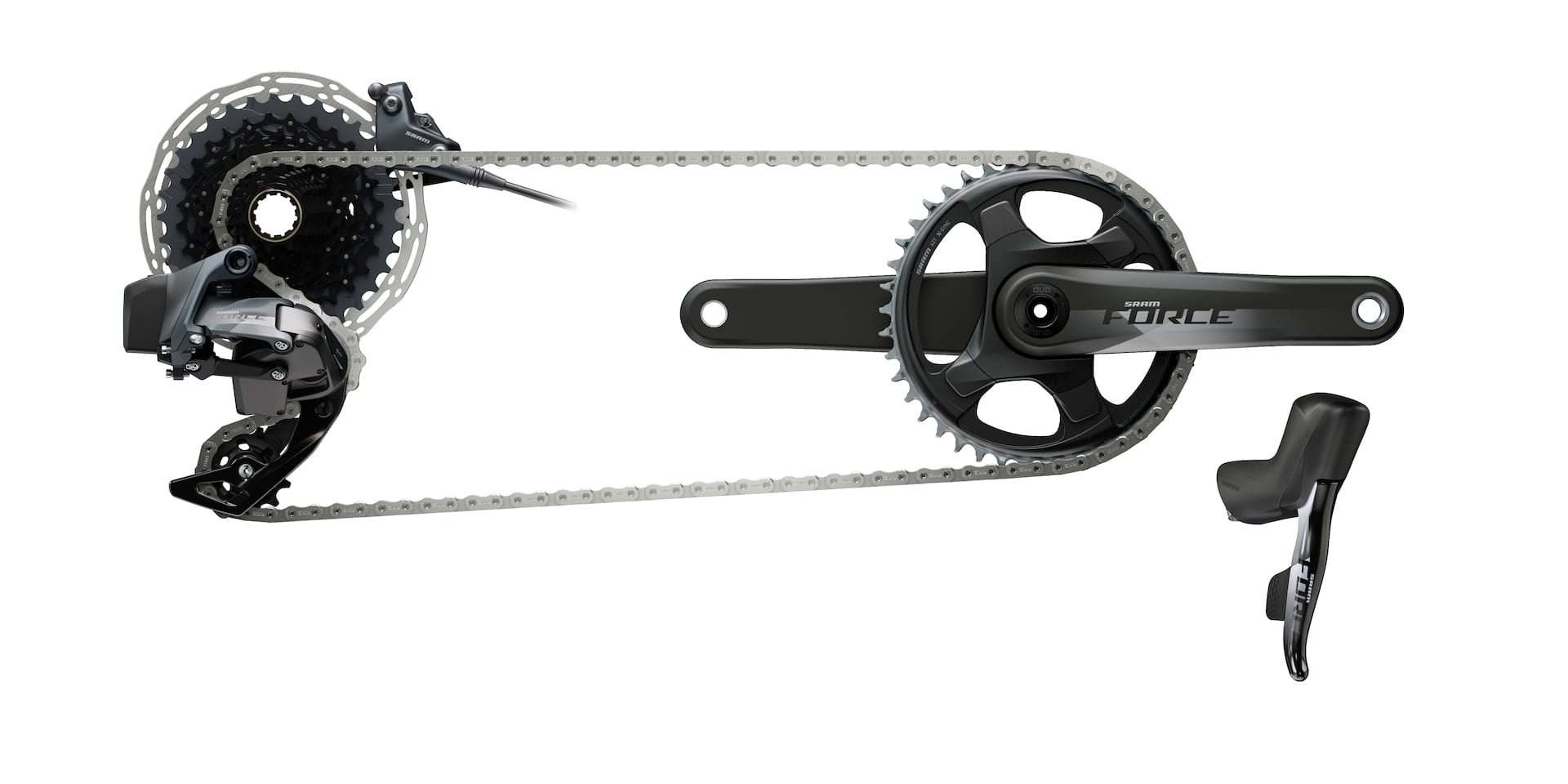
It’s lovely of SRAM to say, but they were clearly not looking in the direction of GritCX when they came to the conclusion that today’s riders are more capable than ever. We know what they mean though, and we live in a world where we expect a huge amount from our bikes; they perform better than ever. Let’s decipher some of those other terms though:
- eTap – SRAM’s wireless electronic shifting technology
- Force – SRAM’s second poshest groupset
- RED – SRAM’s swanky top of the range groupset. We aren’t sure why it gets capital letters. Maybe because it is the bestest?
- AXS – launched in conjunction with the mountain bike eTap products, AXS uses an app to allow riders to see battery status, change component behaviour, personalise controls, get maintenance reminders, and update firmware.

What’s so special?
“On tarmac or gravel, 1x or 2x, eTap AXS™ gives a quiet, secure, and smooth ride. Thanks to the ultra-lightweight Orbit™ fluid damper and a unique Flattop™ chain, you’ll ride more confidently and efficiently than ever—no matter the terrain.”

Gnnnrrrrr… so, this all sound good, but, what the hell is…?
- Orbit fluid damper – SRAM claims this is an innovative new form of derailleur motion control. It uses silicone fluid as part of a lightweight damper system. Compared to a standard friction clutch system, Orbit technology places no additional resistance on the rear derailleur’s spring when under slow or light movement. This means easier shifting and rear wheel removal, but better chain security and less bounce while riding.
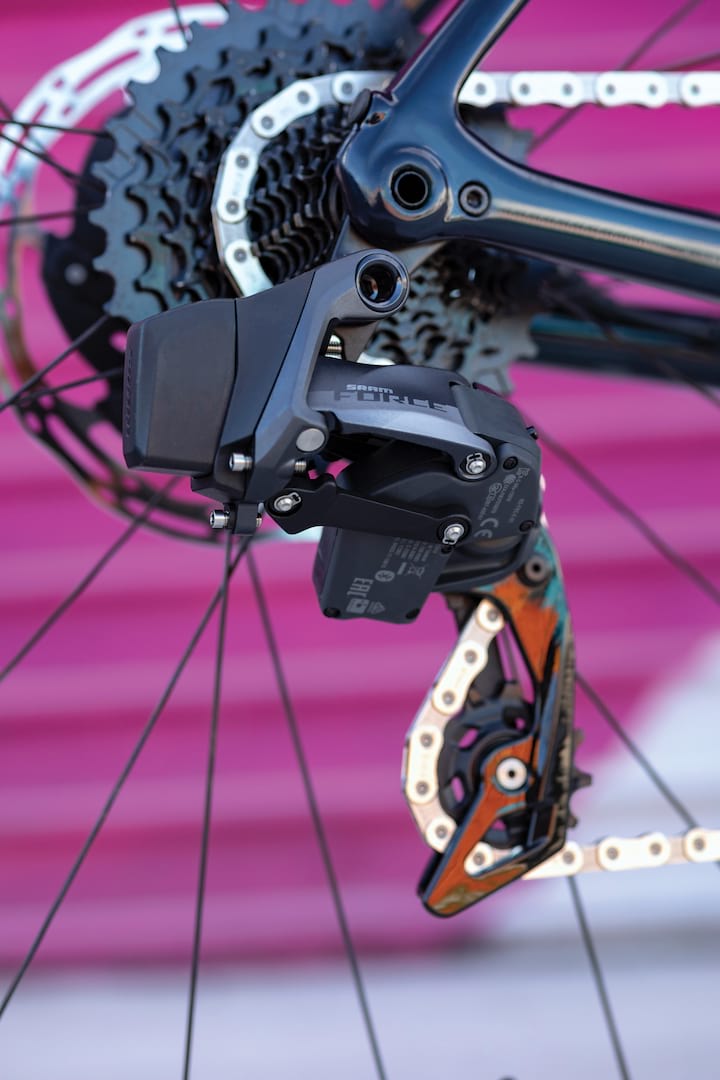
- Flattop chain – pictures probably say more than a thousand words here. The chain’s got a flat top. Why? Well, apparently it allows for a narrower profile. This in turn allows for a wider gear range, and also results in quieter drivetrain operation and increased chain strength and durability.
What’s in the range?
Front Derailleur
Roadies, and those who like the gear range that 2x provides will be glad to hear that a front mech is an option.
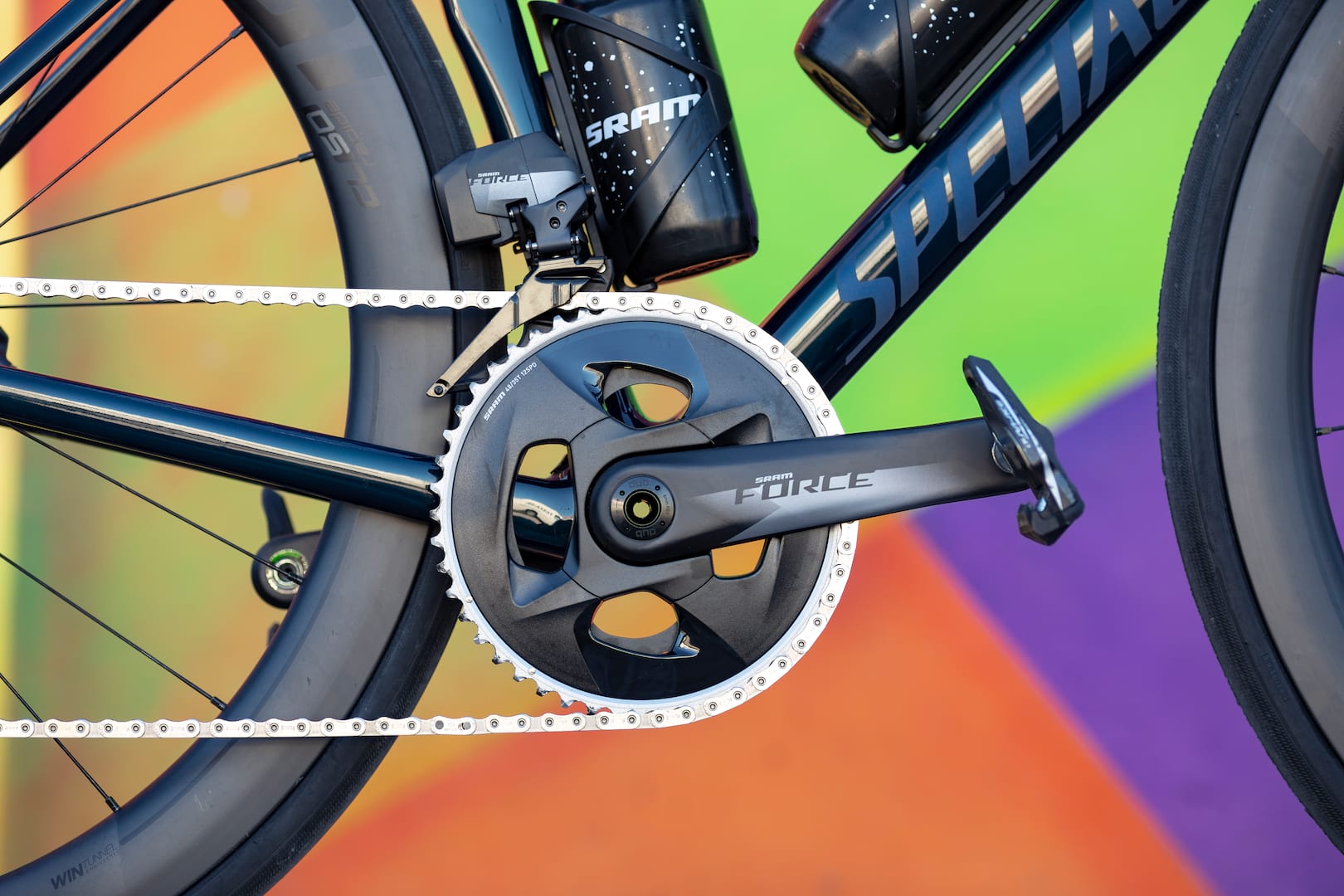
“The SRAM Force eTap AXS™ front derailleur is AXS™ enabled for easy personalisation. The redesigned derailleur offers better rear-tyre clearance—for those that explore all roads [Yey, that’s us!]—and works perfectly with all chainring combinations. No compromises; never miss a shift.”
The mech uses SRAM Yaw™ trimless cage technology… we feel another explanation coming on. Basically, there’s some clever electronic stuff going on that means you don’t need to trim the front mech, regardless of your gear combination. If you already have eTap, you’ll be happy to hear that it is compatible with existing batteries.
Rear Derailleur
“One rear derailleur to rule them all. The SRAM Force eTap AXS™ rear derailleur is designed for both 1x and 2x systems. It capitalizes on X-Range™ gearing technology for enhanced range and chain management and features larger pulleys for improved durability and efficiency. Strong, smooth, quiet and AXS™ enabled.”
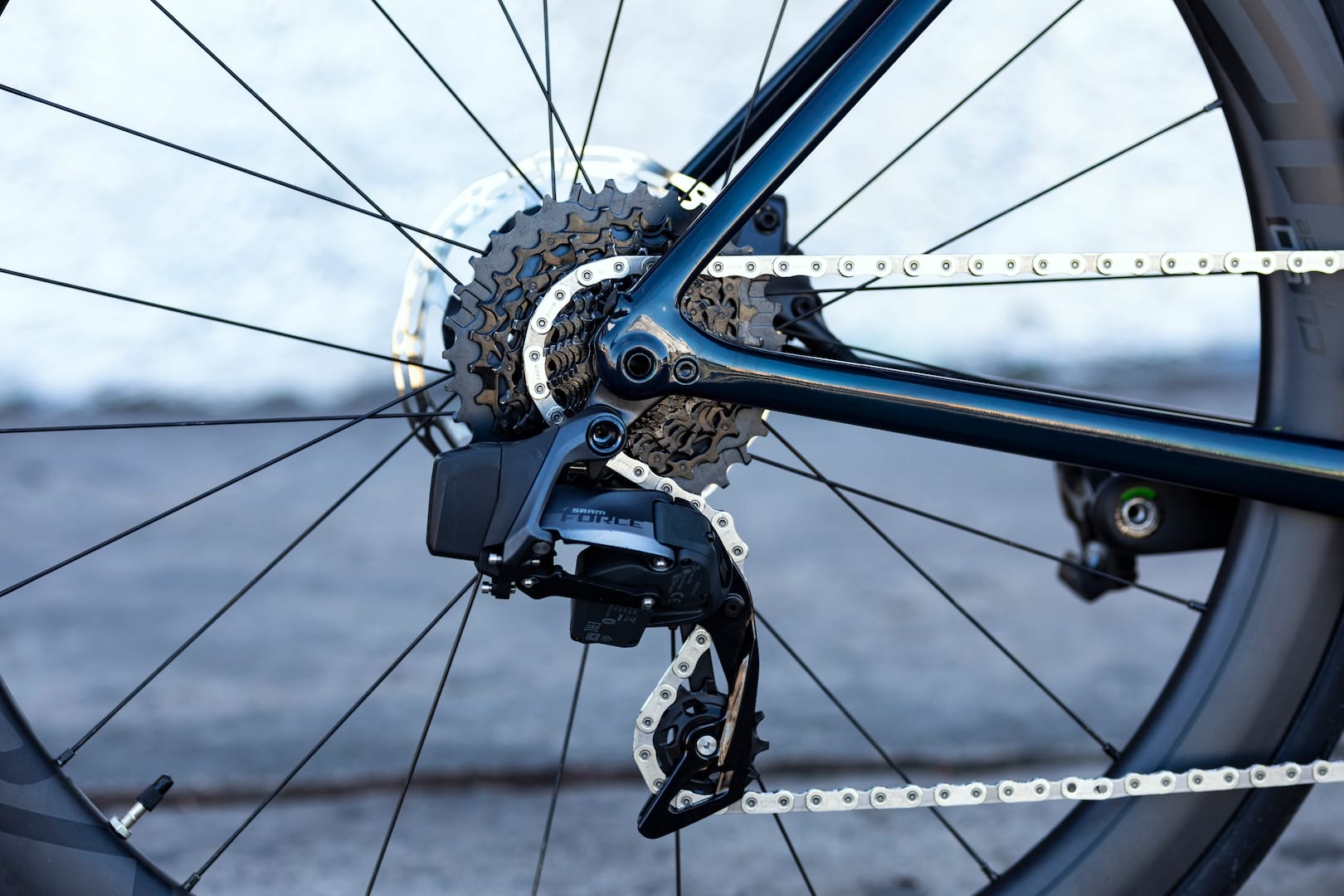
Right, we are going to start charging for a translation service. X-Range: basically, the rear mech can cope with the wider range cassettes associated with gravel riding, and are becoming popular on the road too. The rear mech will work just as well, regardless of whether you are running 1x or 2x.
We’ve also already picked up that the rear mech will use Orbit damping to keep the drivetrain quiet and secure, in a similar way to current clutch mechs, but keeping shifting as light as possible.
Chain
“Beyond an incremental improvement. The Flattop™ technology of the SRAM Force® chain creates a lighter, quieter, stronger chain. Ride far, long and fast—this chain can go the distance.”

Yes! Think we’ve already covered this one. But, apparently the inner link plates and rollers are hard chrome plated , to reduce wear. It’s also worth noting that the chain requires a different quick link to other SRAM chains – it gets a name, obviously: PowerLock.

Cassette
“Designed for the next generation of drivetrains—and the next generation of riders. The SRAM Force® XG-1270 cassette is optimized for electronic shifting and features our X-Range™ gearing technology. Smooth, precise shifts, from 10T on up.”
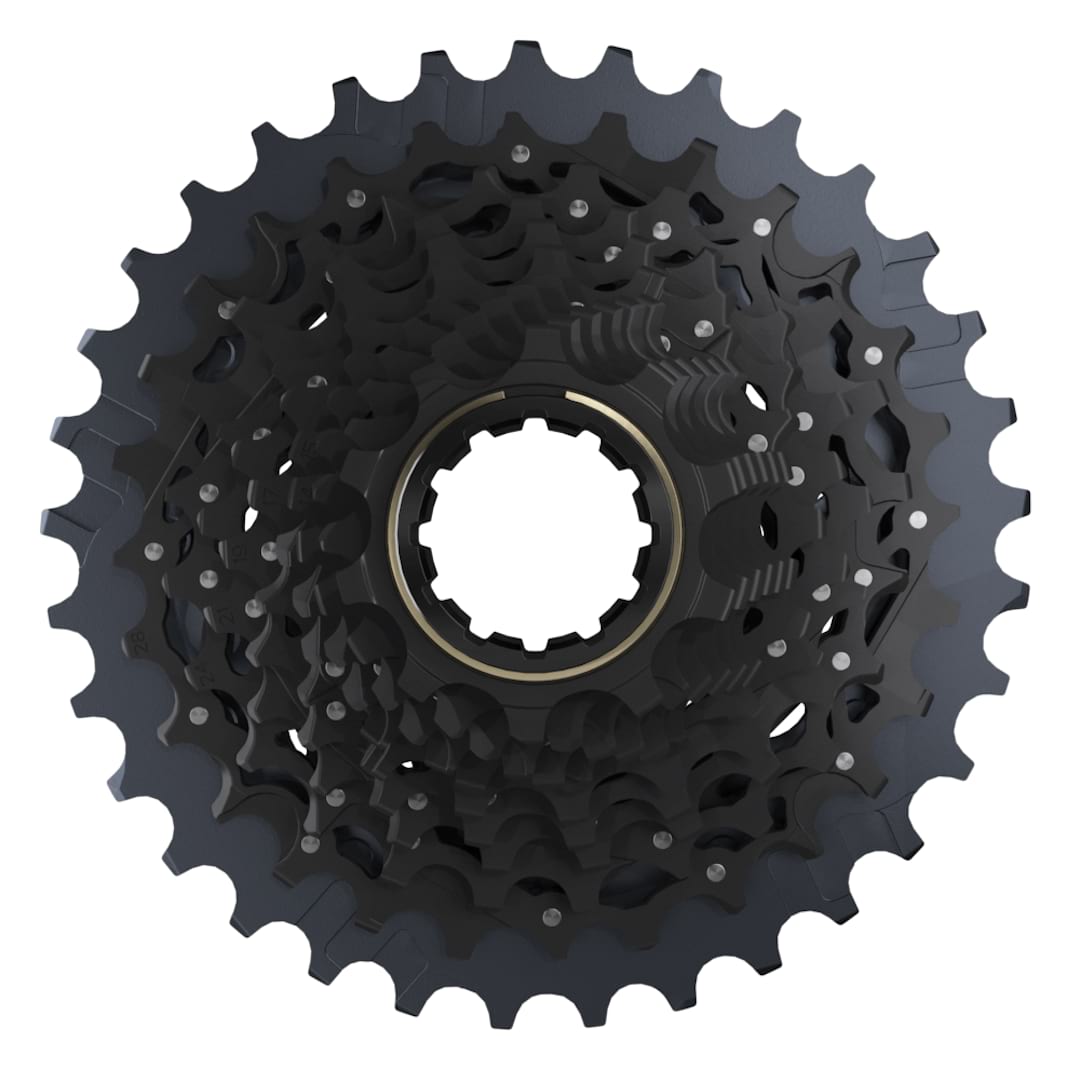
We think we have caught up with everything here too. First of all, in case it wasn’t clear, this is a 12sp cassette. That’s one more than we’ve seen on Force before and a first for the gravel market. The extra gear is achieved by using a 10t smallest sprocket. To squeeze a 10t cog in there, the cassette uses SRAM’s XDR driver freehub body, which will be familiar to anyone who has used its mountain bike 1x group sets. If you’ve got a gravel bike with a SRAM wide range cassette fitted, there’s a good chance it also uses the XD body. XDR uses the same interface, but is slightly wider – due to it being harder to squeeze smaller sprockets into the space.
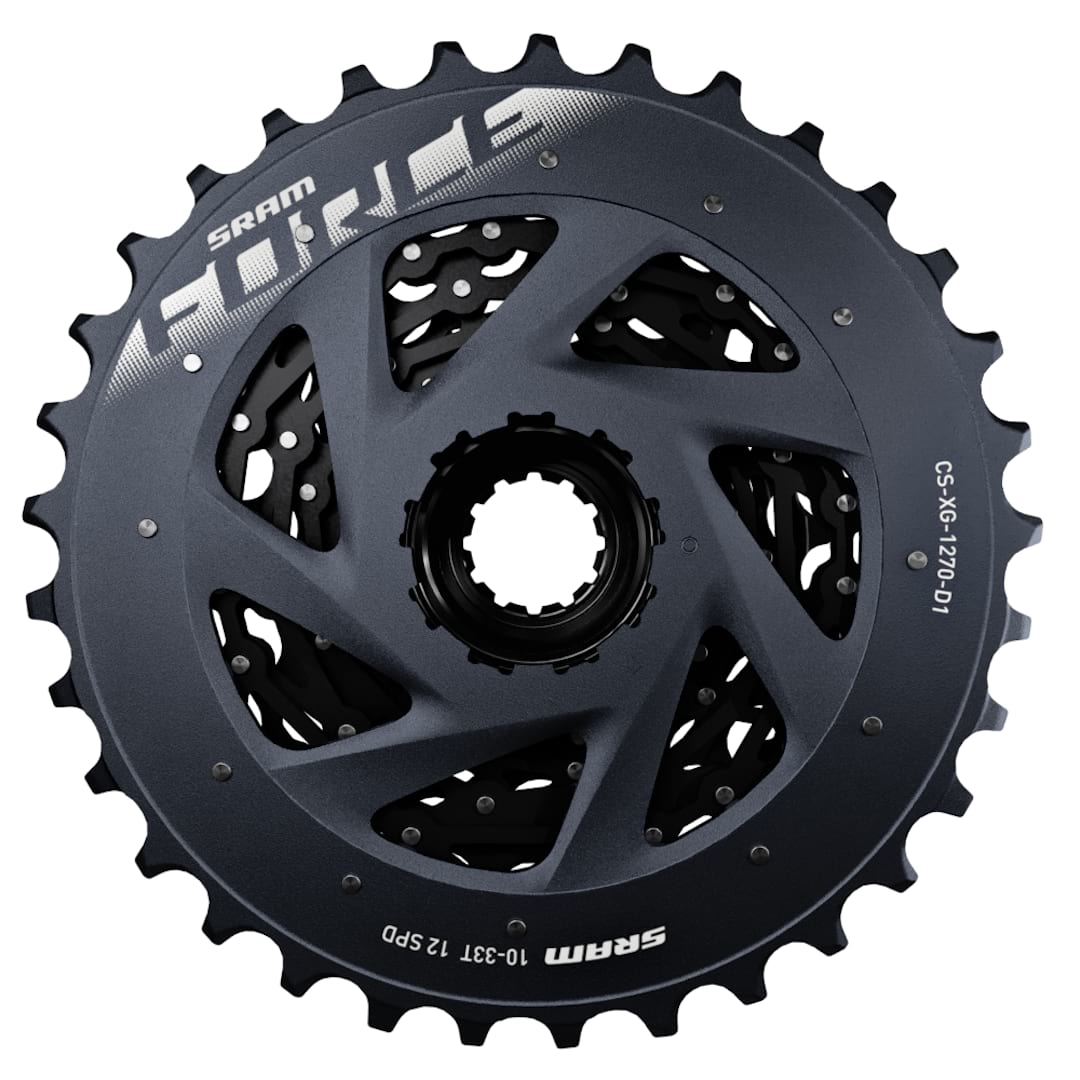
The cassette will come in three options: 10-26t, 10-28t, 10-33t. Some quick back of the fag-packet gear-inch calculations suggest a 36t front ring combined with a 10-33t will give a similar range to 42t combined with a 40-11t spread (although it loses a smidge at either end). If you are keen for lower gearing, there is cross-compatibility with SRAM’s MTB wide range cassettes and eTap Eagle rear mech.
HRD Shift-Brake System
“Wireless electronic shifting and hydraulic disc braking: the best of both worlds. The SRAM Force eTap AXS™ HRD shift-brake system integrates top technology into an efficient package and offers AXS™ for easy personalisation.”
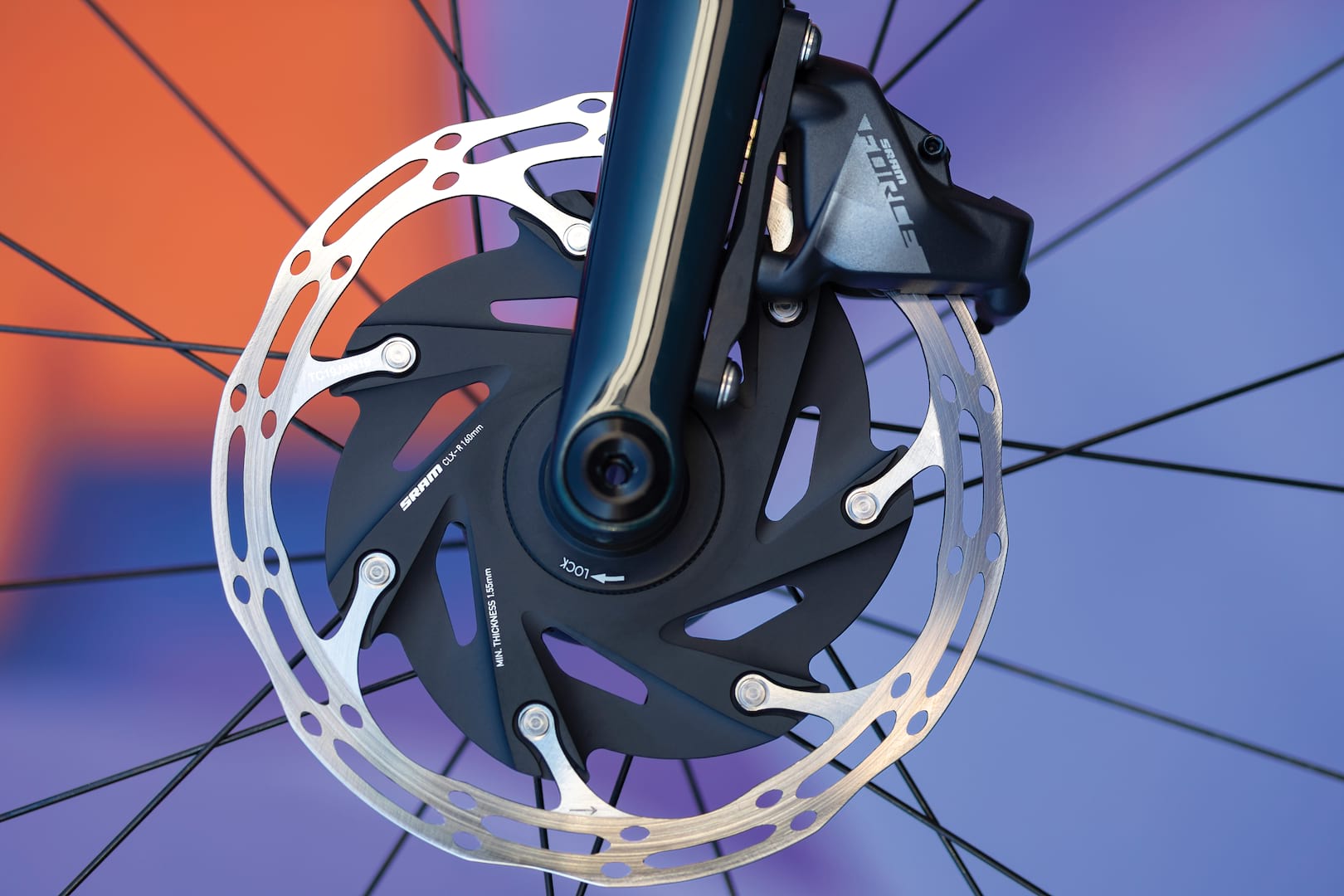
HRD simply means hydraulic braking. In case you thought this was getting a little simple, SRAM threw in this beauty though. There is “one port per side for Blips™”. WTF? Well, Blips are satellite shifters… so you can have extra shifting buttons on bar extensions or the tops, or wherever you please.

Crankset
“Riders want more range and closer steps between gears—and that’s the driving design principle of the SRAM Force® crankset. It offers smaller chainrings with a consistent 13-tooth gap between size variants, delivering smooth, accurate and dependable shifting for the modern rider. Always find the sweet spot.”
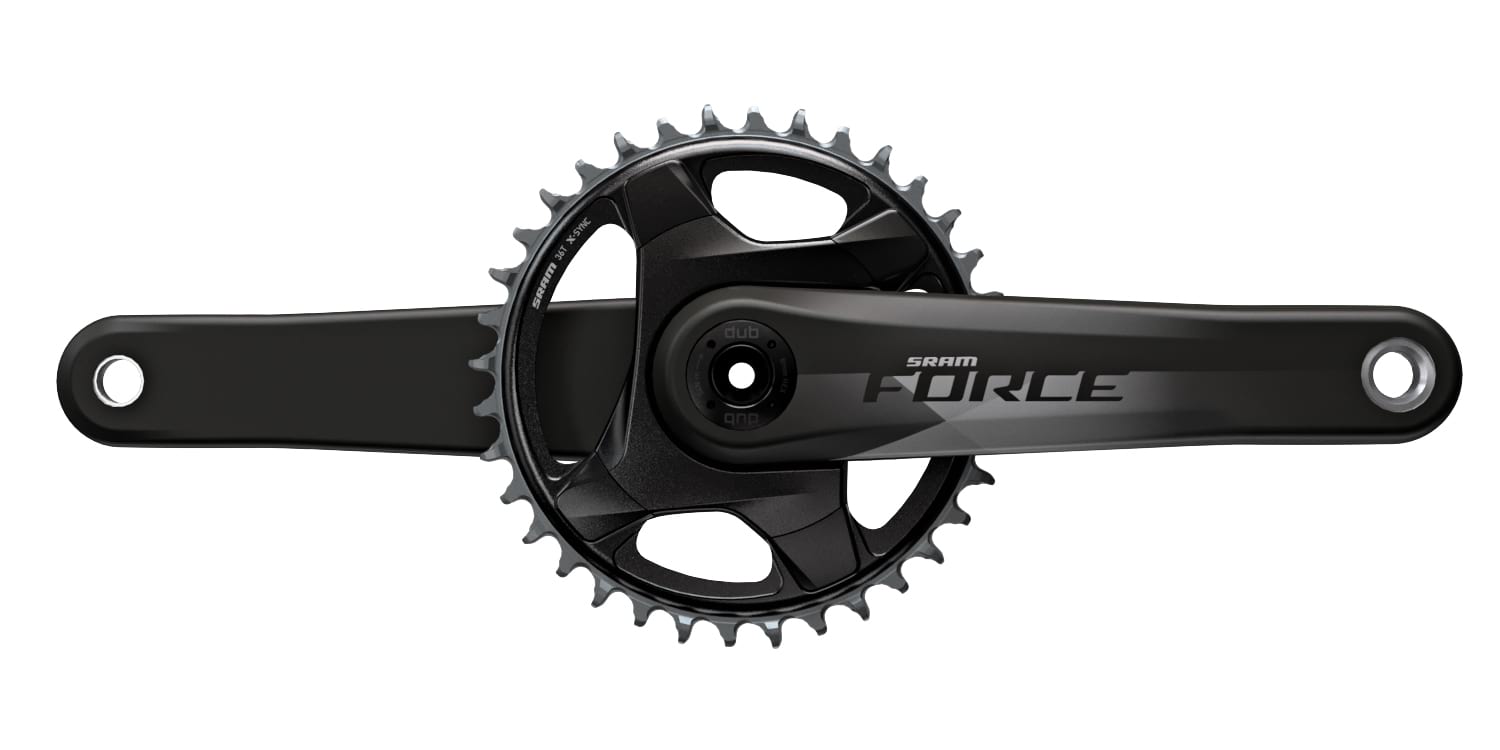
“We pioneered the 1x drivetrain, and the SRAM Force® 1 crankset evolves the innovation. It’s lighter, stronger and simpler—non-aero chainrings can now be installed with a single tool. For cross, TT, tri and crits, this is the king of 1x.”
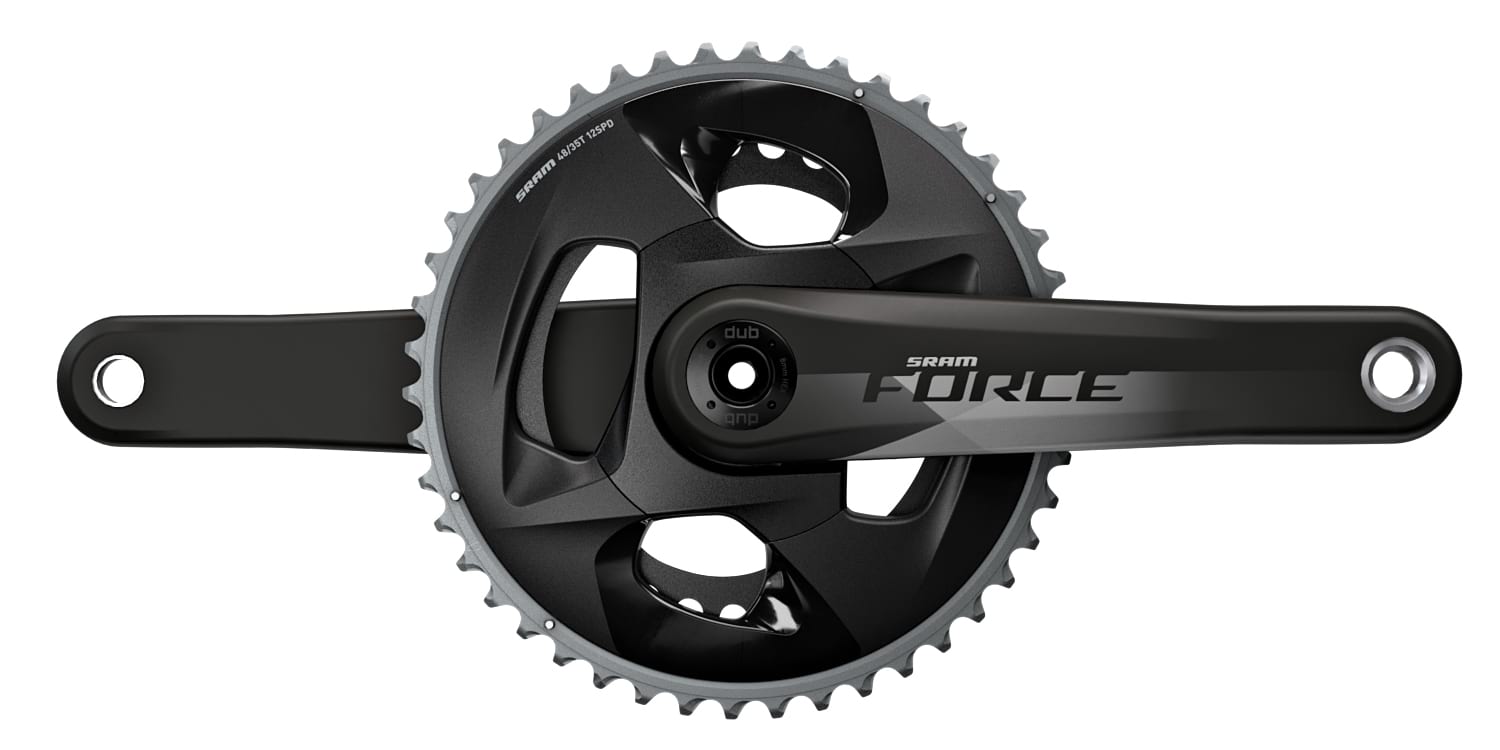
Basically, there’s two options. One ring or two. If you go with a double, the options are 48/35t or 46/33t (remembering the broader spread of gears, and a 10t sprocket). Single ring options span 36t to 46t, and feature a narrow wide profile to aid chain retention.
You can upgrade both cranksets to work with a (SRAM owned) Quarq power meter.
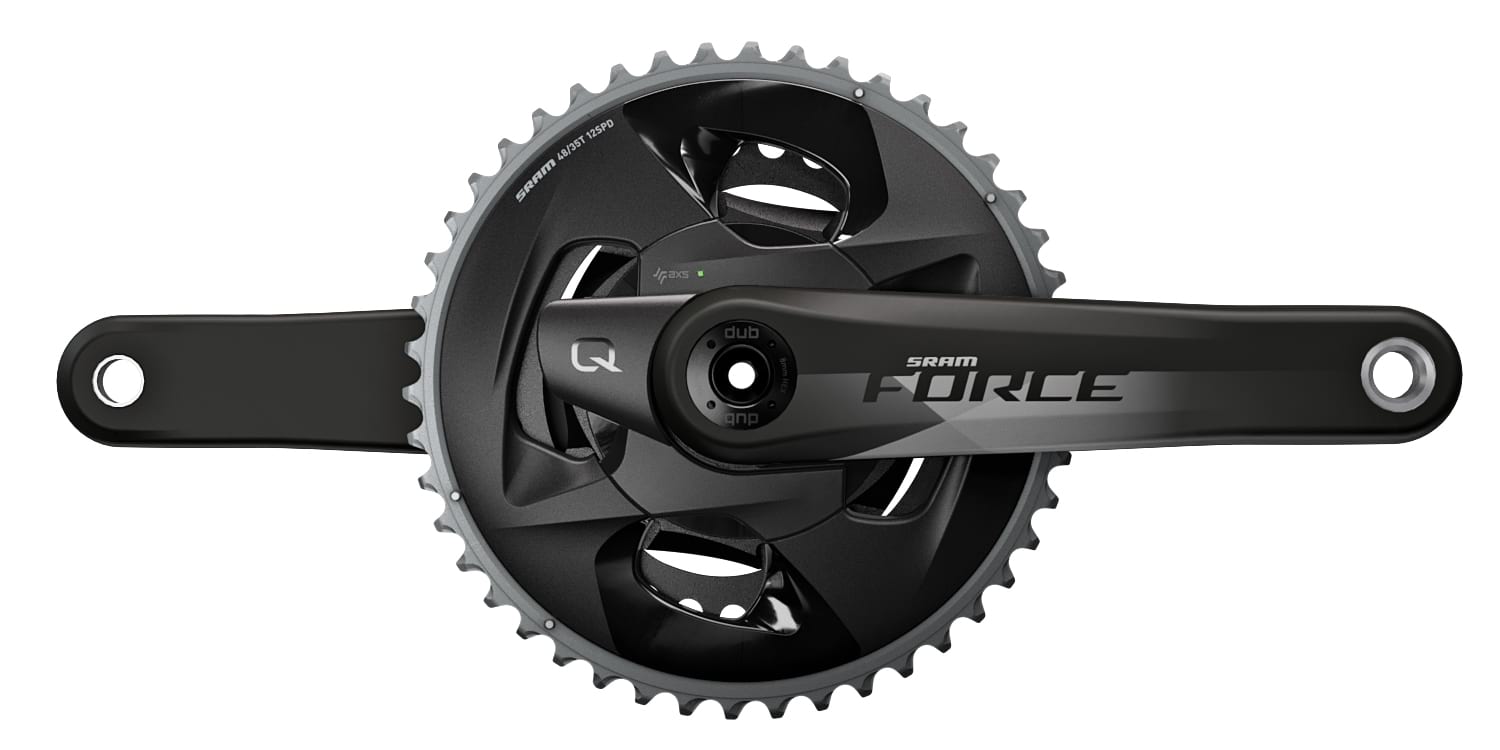
Rotor
“Designed specifically for road riding, the SRAM CenterLine XR (CLX-R) rotor is the perfect complement to a new SRAM eTap AXS™ drivetrain.”
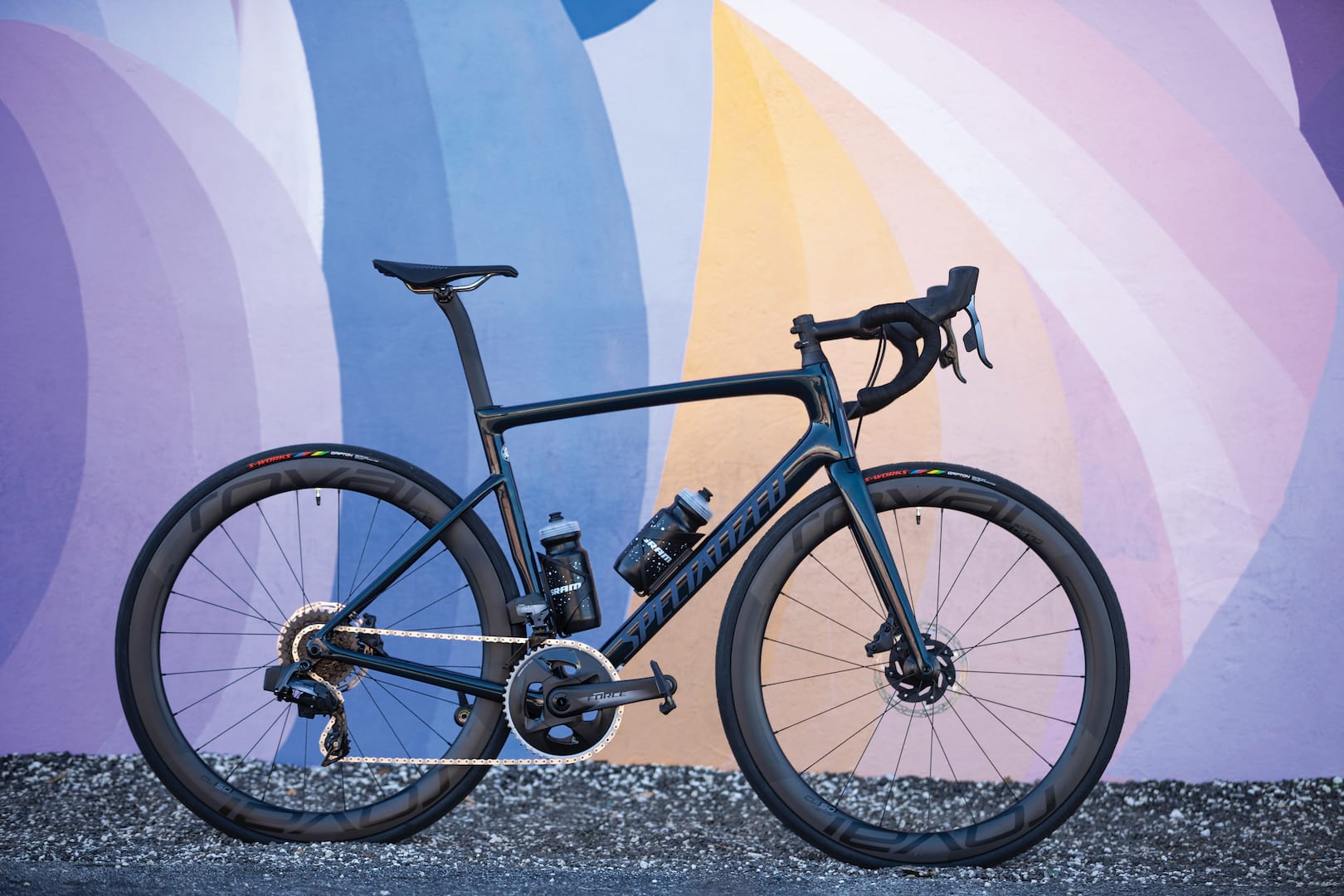
We think SRAM means that the rotor will be pretty good for gravel too, but it does have rounded edges to make it UCI compliant for road racing use. Apparently a CenterLine track quietens down the brake as well.
Bottom bracket
“The relationship between bottom bracket spindle and bearing is the core of DUB™ technology. It’s where stiffness meets durability. We took it a step beyond conventional thinking and made everything simpler—better integrating the relationship between chainring, crank, spindle, and bottom bracket. It’s this approach to developing a complete system that equals better drivetrain performance.”

DUB – everyone cheered for a new standard! Actually, DUB is kind of a good idea. Rather than explain it here, Singletrack Magazine did a good job when it was launched. Basically there is compatibility across all current standards.
- BSA
- BB30
- PF30
- BBRIGHT
- PF30A
- 386
- PF86.5
Price List and Weights
Phew…. so, that’s the low down. How much does the not-as-expensive as Red groupset cost? Well, still rather a lot actually. Ouch. There’s actually a lot Very New Technology in there – including some stuff that was only just announced for SRAM Red a few weeks ago. It’s therefore not a huge surprise that the Force level spec is still going to be prohibitively expensive for some people. Still, £1924 for a 1x hydraulic groupset is pretty eyewatering.

There will be some who can afford it though, and we love the idea of the clean lines that a lack of cables will offer, as well the reliability that electronic shifting can bring (as long as you remember to charge the batteries). Also, the nice thing about trickle down is it keeps trickling down.
| Groupsets* Road | msrp usd | msrp eur (incl. VAT) | msrp gbp (incl. VAT) |
| 2x Hydraulic Road Disc Brake | $2,678 | €2,548 | £2,274 |
| 2x Rim Brake | $2,478 | €2,408 | £2,164 |
| 1x Hydraulic Road Disc Brake | $2,328 | €2,148 | £1,924 |
| 1x Rim Brake | $2,078 | €2,058 | £1,814 |
•Groupsets include rear derailleur, front derailleur (if applicable), controls, brake calipers, rotors (if applicable), crankset, bottom bracket, cassette, chain, battery(s), and charger.

Variants
| Powermeters/Cranksets | 2x: 48/35 46/33 1x: 48 Aero 46 44 42 40 38 36 |
| Cassettes | 10-26 10-28 10-33 |
| Rear Derailleur | One rear derailleur for all chainring and cassette combinations |
| Front Derailleur | One front derailleur for all chainring and cassette combinations |
| Disc brake calipers | Flat mount for 160 or 140 rotors |
| Rotors | 140 or 160, CenterLock or six-bolt |
Groupset Weights
| GROUPSETS | 2X | 2X Power | 1X | 1x Power |
| ROAD | ||||
| Force Disc | 2,812g | 2,912g | 2,572g | 2,608g |
| Force Rim | 2,453g | 2,553g | 2,213g | 2,249g |
| AERO | ||||
| Force Disc | 2,622g | 2,722g | 2,383g | 2,419g |
| Force Rim | 2,223g | 2,323g | 1,983g | 2,019g |


